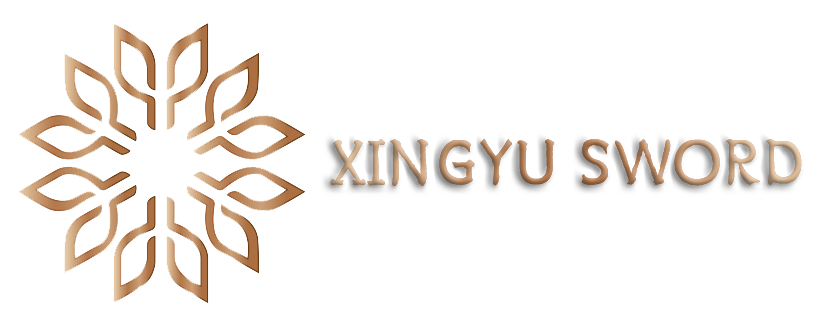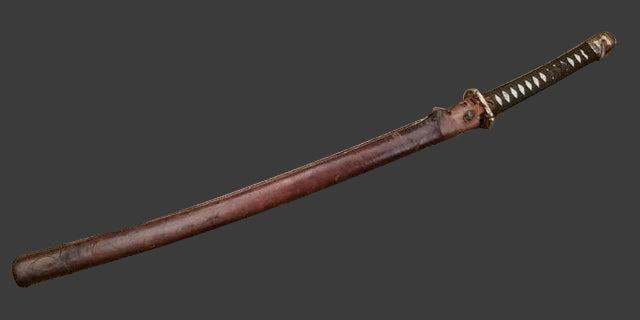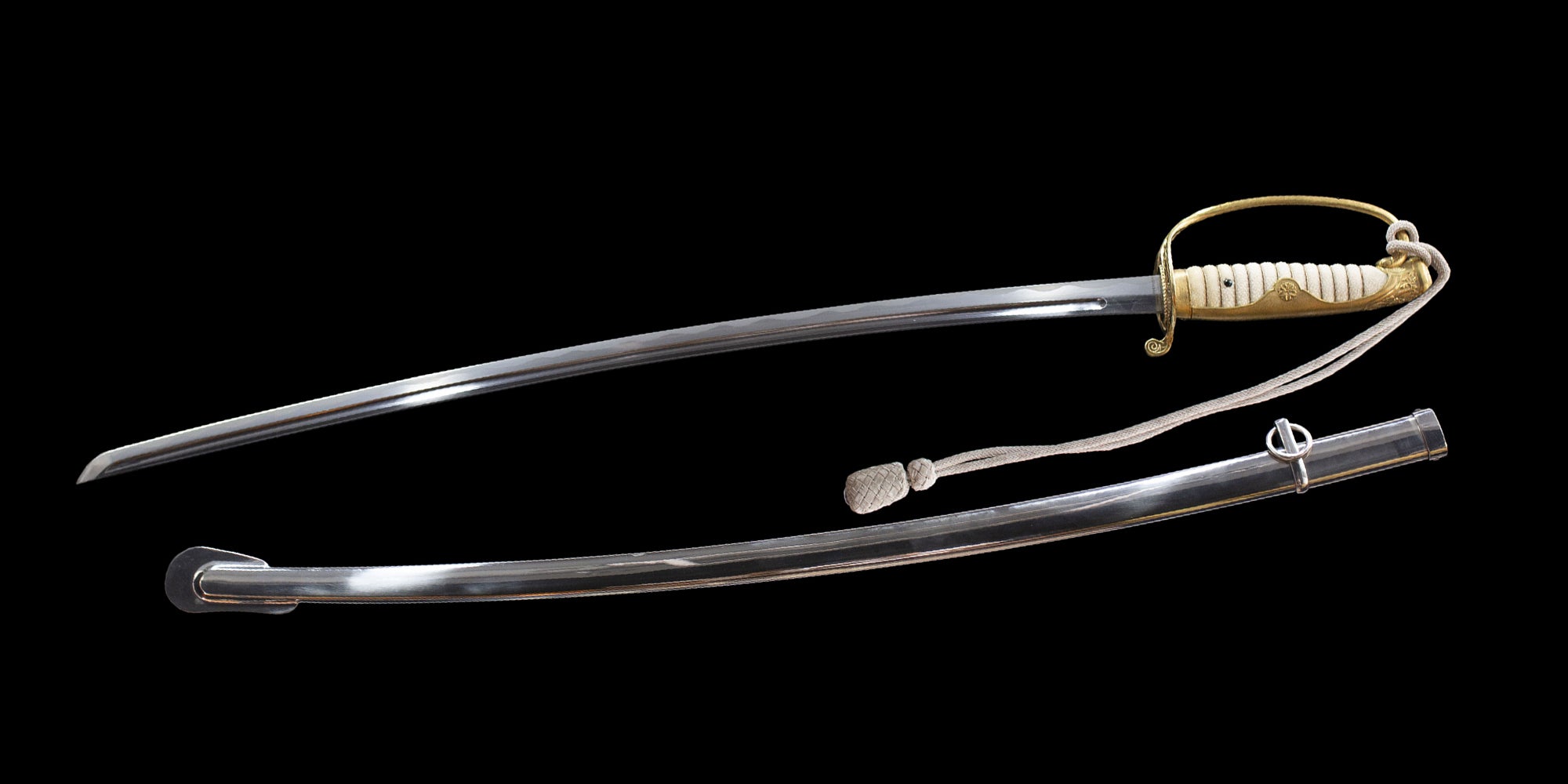The notorious and fierce blade - Type 95 Sergeant Guntō

Japanese NCO katana-Type 95 Guntō
In Japanese, Guntō means "the fighting sword worn by soldiers. Since modern times, Japan has always looked to the West for military guidance. The military sword was also westernized. Emperor Meiji and Hirobumi Ito, among others, wore Western-style command swords in military dress. Until 1934, Japanese military officers wore Western-style command swords decorated with cherry blossom patterns on ceremonial occasions; the combat sword was reformed into a saber-style with a longer handle and a combination of Western hand protectors, which is convenient for soldiers with nostalgic feelings to carry their Japanese swords in the jackets of foreign swords.

94 type saber

The initial version of the Type 95 Guntō, with a copper handle, produced only about 6000 pieces
More importantly, in the highly hierarchical Japanese army, the rank of "junior officers" at the top and bottom of the ranks was lower than that of officers, but much higher than that of enlisted men. These soldiers also need a guntō to symbolize their identity. But the basic number of "junior officers" is huge, so equipping them with Type 94 Guntō(kyuyon-shiki gunto) is not only inconsistent with their identity, but also impossible to accomplish tasks. But in order to instill the spirit of "Bushido" in the soldiers, the Japanese still wanted to equip these "junior officers" with a Guntō similar to the Bushido sword. Thus the Type 95 Guntō(kyugo-shiki gunto) was born.

The initial Type95 Guntō is also the most common type
How to distinguish between Type95 Guntō and Type94 Guntō?
Looking at the Type 95 Guntō from a distance, it may not be obvious at first glance that it is different from the Type 94 Guntō. However, upon closer inspection, you can see that the handle of the Type 95 Guntō is actually made of aluminum material, and is only shaped into the shape of a Japanese sword handle with patterns. Different colors are even applied to different parts (the original Type 95 Guntō handle was made of copper, not painted, but oxidized), making it even harder to distinguish from a distance. The hilt and other components are also similar to the Type 94 Guntō, but the workmanship is very different, and the eye nails are replaced by screws. Compared to the hilt, the difference in the scabbard is more pronounced. The scabbard of the Type 95 Guntō is similar to the previous Type 32 Guntō and is made of iron. There is a fixed hanging ring on the scabbard, and there is a stone protrusion at the end of the scabbard to prevent damage to the scabbard from hitting the ground (the earliest Type 95 military knife did not have a stone protrusion). In addition, the cutting thread of the Type 95 Guntō is completely different from that of the Type 94 Guntō; it is made of leather and is for decorative purposes only.

The blade of the initial Type 95 Saber
In addition to the exterior design, the blade of the Type 95 Guntō also differs greatly from the Japanese sword. The Type 95 Guntō is a pure industrially processed sword made of the same high carbon "Army Sword Steel" as the 32 type cavalry sword and the 30 type bayonet, using oil quenching technology. It is completely different from the Japanese sword made of Tamahagane, Hamon and exquisite craftsmanship with almost no artistic value. The blade has a Hi opening, which is actually used to increase the strength and reduce the weight of the blade, similar to the blood groove structure. The mekugi and maki of the original Type 95 Guntō shared the same hole, but perhaps due to strength issues, they were quickly changed to two. Although the cost is cheap and the artistic quality is poor, due to the use of high quality steel and the inheritance of the shape of the Japanese sword, the performance of the 95 type guntō is still excellent, even better than the ancient Japanese forged sword.
 The initial version of the Type 95 Saber had only one hole on the handle
The initial version of the Type 95 Saber had only one hole on the handle
As a sword, the Type 95 Guntō may have been the most powerful weapon of its kind at the time - because by the mid-1930s, very few armies were equipped with long swords for their soldiers. One of the greatest enemies of the Japanese army on the battlefield, the Chinese army, was equipped with a large sword because the production capacity of bayonets was severely insufficient and they could only use a large sword made of iron sheets as a weapon for blade warfare. But for Japan, which has already entered industrialization, there is no such problem at all, not to mention that the cost of the Type 95 Guntō is much higher than that of the bayonet. Therefore, equipping this guntō is really just a "feeling". Moreover, the Type 95 Guntō has no further advantage over the bayonet.

The initial Type 95 Saber saw an additional screw on the handle
However, Japanese guntō did play a role on the battlefield in WW2. Many existing Japanese guntō sword have cracks, chips, or curled edges, which is a testament to their practical experience. The Type 95 Guntō, as the largest type of Guntō with the most equipment, is equipped with lower level sergeants, so the opportunity for practical combat experience is naturally greater.

Lateral Chuso Close-up of the mid range type95 guntō handle

Change of chuso position
As the war progressed, the production level of Type 95 Guntō also underwent significant changes due to the scarcity of resources and a significant increase in production. In addition to the initial and initial stage introduced earlier, it can generally be divided into the mid-term type, the terminal type, and the ultimate stage type. The mid-term version first changed the tsuba design, replacing the complex sunflower-shaped copper tsuba with an oval-shaped iron tsuba. In addition, the mid-range model can still be divided into two types: the mid-range model type 95 guntō in later production had the "chuso" (lock) moved to the side of the handle. This design was also adopted by later models.
The outward appearance of the late Type 95 Guntō has greatly diminished, and the handle has even been changed to wood, but it can still be seen that it imitates the new Type 3 Guntō. With the change of the handle, the shape of the blade shaft also changed, especially the position of the mekugi ana. The decorative pattern on the handle is gone, replaced by a diamond-shaped anti-slip pattern. The accessories were also changed from brass to iron and painted black. Finally, to save iron, even the SAYA was changed to wood. This Guntō is also known as the most advanced type.

Typical 'Mountain fastness' 95-style guntō


The recorded 95 style guntō engraving, due to the Japanese tradition of burning documents, some engraving can no longer distinguish the manufacturer
Due to the fact that the Type 95 Guntō is one of the largest sabers produced by the Japanese Army, the price is much lower compared to the expensive Type 94, Type 98(kyuhachi-shiki gunto), Type 3, or Tachi Guntō, which often cost tens of thousands or even hundreds of thousands of yuan on the collectors' market. However, because of its simple structure and easy processing, there are a large number of fakes in the collectors' market. The workmanship of these fakes is rough, and the tool handles are often made of aluminum or copper without any traces of paint. The blade is also very rough, often engraved with words such as "Emperor" and "Wu Yun Chang Chang", especially the front end of the sword Hi is circular and the authenticity of Guntō can be easily distinguished by this detail. In addition, the engraving on the blade is also an important basis for determining authenticity.



Leave a comment
This site is protected by hCaptcha and the hCaptcha Privacy Policy and Terms of Service apply.